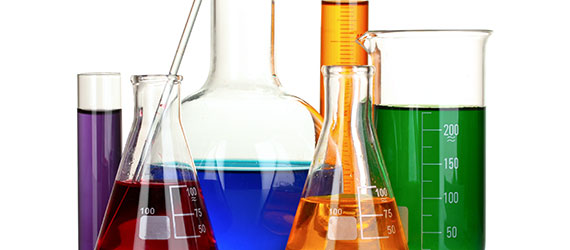The importance of cleaning product ingredients in sustainable cleaning
Early proposals about the way to make cleaning ‘greener’ tended to focus exclusively on selection of ingredients for cleaning products to try to make them ‘safer’ for the environment. These ideas came predominantly from environmental NGOs which pointed to the hazards of ingredients and suggested that these would translate automatically into harmful effects. This suggestion simply isn’t true. It fails to distinguish between hazard and risk. More to the point, these early proposals paid little attention to the major impacts which occur in the life cycle, in terms of use of resources and energy, and potential impact on climate change.

Ingredients and sustainability
A central theme in improving the sustainability of cleaning products is finding ways of cleaning more with less. Partly this can be achieved by skilful formulation, finding combinations of ingredients that work well together. A good formulator always has one eye on the impact profile of each ingredient, for there would be no benefit in using a little less of a more effective ingredient to save resources if it is far more energy intensive to produce for example.
Using a highly functional ingredient to replace a much less weight-effective one can also be a way of compacting products and making major savings in both packaging and transport. Enzymes are just such an example: highly-efficient soil and stain removers, the quantities used are tiny and can replace thousands of times their own weight of some non-enzyme ingredients.

Enzymes also have the virtue of working well at low temperatures, and in laundry and ware-washing operations they have allowed major reductions in wash temperatures with corresponding savings in energy and reduced emissions of CO2. Bleach activators, small amounts of which allow oxygen bleaches to work well at low temperatures are other examples of innovative ingredients that can bring marked improvements in the overall sustainability of the cleaning process.
Ingredient selection and product safety
The Guidance on sustainable cleaning for users of professional cleaning products, developed with DEFRA and the UK Chemicals Stakeholder Forum, contains a section which examines issues related to the safety of ingredients. It provides an overview of the main ingredient families that are used in cleaning products, and some where controversial statements have at some time been made suggesting they should not be used in cleaning products.
The function of each ingredient or family and any issues that have been raised about them are explained. For each family there is guidance about their suitability for use in cleaning products, founded in most cases on detailed and published scientific risk assessments. It shows almost without exception that early fears raised about cleaning product ingredients based only on their hazards were inappropriate, and that when properly formulated and used they are safe for both people and the environment.

This guidance on ingredients was reviewed by DEFRA’s Advisory Committee on Hazardous Substances (now HSAC). There are two ingredients, both substituted by alternatives some years ago, which the Guidance emphasizes should not be used in cleaning products. A limited number of ingredients are recommended as best used selectively, either choosing certain members of a family or using them only where the nature of the task demands it and/or conditions of use are suitable. The remainder present no concerns in terms of safety or sustainability when properly formulated.
All ingredients should be used at no more than the necessary levels to minimize use of resources. The Guidance points out that it is the role and skill of the formulator to optimize the use of all ingredients, balancing and combining them in a formulation that gives the desired cleaning performance in the most eco-efficient and economical way. It further cautions against users, for example in the form of tender specifications, trying to specify ingredients that should or should not be used according to the advice of non-specialist consultants for reasons of safety or sustainability. Any concerns about ingredients, especially those not covered in detail by the Guidance, should be discussed directly with the product manufacturer.
Although products should be safe in all respects, there may however be opportunities to usefully widen margins of safety. Risk assessments build in various safety factors partly to allow for uncertainties, so even exceeding the safe level for an ingredient doesn’t automatically mean harm will result. But where margins of safety are no more than adequate, widening them – for example by finding less ecotoxic or more rapidly degraded alternatives – can give valuable added reassurance. Using substances that degrade rapidly and completely, as is now required by law for surfactants, is a good guarantee there will be no long-term unexpected effects. That’s why the AISE Charter for Sustainable Cleaning encourages their use. In contrast, if even a thousand times the normal use level of an ingredient would pose no risk, widening that safety margin would be of no benefit.